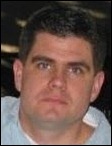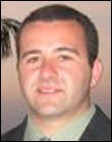Readers Write 1/16/13
Submit your article of up to 500 words in length, subject to editing for clarity and brevity (please note: I run only original articles that have not appeared on any Web site or in any publication and I can’t use anything that looks like a commercial pitch). I’ll use a phony name for you unless you tell me otherwise. Thanks for sharing!
The views and opinions expressed are those of the authors personally and are not necessarily representative of their current or former employers.
Lessons Learned from My First HIMSS in 2007
By Bern Werner
Six years ago I set out on a journey from Pittsburgh, flying to Baltimore to be picked up by my young boss (Todd Johnson, the 25-year-old head of our six-person software company, Salar Inc) in his 140,000 mile-worn Toyota Forerunner for a trip to New Orleans. The truck was loaded with precious cargo and our booth for HIMSS07, packaged neatly in three plastic containers.
On our first day of the journey, we mused over where the healthcare IT industry was headed and whether there was a future in it for our small company.
When I joined Salar a year earlier, we had begun implementing our physician documentation software at 20-hospital system that already had a major EMR (I’m not saying who the vendor was, but the company name has six letters and I met the owner by chance at HIMSS before I knew that his booth was worth more than our company). I figured the big fish would just look at our success, then “ borrow” our IP and we’d be out of business in a couple of years.
We made it safely to New Orleans, and I was excited to be on the floor. I was admittedly green, and knowing the value that we could provide, I was eager to sell it to anything that came within two feet of our booth.
My favorite memory is of one visitor that walked up to our booth just after the convention hall had cleared for morning session. I was tending the booth on my own. He was accompanied by two booth bunnies. I was alone in front of our 10×10 booth with our slick, new, cloth marketing extravaganza. I asked him if he was interested in seeing a physician documentation tool that is better than anything on the market and drives physician adoption, etc. He was very kind and let me finish before saying, “No, thanks. I was looking for that booth that has a treadmill. Know where that is?” I did not.
As he walked away, my boss was just returning to the booth. He said to me, “Do you know who that was?” I said no. He said, “That was Neal Patterson.” Thus began my real HIMSS education.
I now find myself preparing for HIMSS 13 with the same company, but with two million completed forms and over six million captured charges behind me. Though I’m flying to New Orleans this time, there are many parallels to the 2007 road trip (which included driving through tornadoes on the way home and roaches in the non HIMSS-approved hotel) and events of the past year, with our company changing hands three times.
One thing for sure is that I’m no longer worried about the big guys getting ahead of us when it comes to innovation. They can steal our ideas and they can try to pilfer our content, but they move like the QE2 we’re still zipping around in our speedboat, changing direction as fast as our customers demand.
If I find HIMSS 13 to be a sales bust, no biggie. Not only will I be able to recognize some of the industry’s biggest icons, I know I’ll have a good time at the HIStalk party.
Bern Werner is VP of implementation with Salar of Baltimore, MD.
Ambulatory EHR Adoption: Success vs. Failure
By Justin Scambray, MBA
In a New York Times article, In Second Look, Few Savings From Digital Health Records, David Blumenthal, MD expresses his thoughts on the current struggles the US health care system is facing with the successful adoption of the EHR. Technology “is only a tool,” said Blumenthal. “Like any tool, it can be used well or poorly.”
While there is strong evidence that electronic records can contribute to better care and more efficiency, the systems in place do not always work in ways that help achieve those benefits.
Technology is only a tool, and it is true that it’s all in how you use it. However, it’s not just good use of the technology that will yield results. Physicians need to understand that current processes and the way their practice has run for the last 15-20 years must change.
To put a tool like an EHR in place and expect that it will conform to existing systems and workflow is like changing all the rules in a game, but not changing how the player plays it. This is what many practices end up doing, and the very tools put in place that are supposed to help the practice begin to work against it.
After working in the ambulatory EHR market for seven years, selling and being a part of hundreds of implementations, there is one common attribute that I have seen that separates success from failure: the ability to change and adapt systems and processes to the right tools and right people.
The EHR market has been plagued with the thought that this tool — the EHR — will change the medical practice. The fact of the matter is that it is the practice that needs to change for the EHR to work properly. Careful business process mapping and systems redesign needs to take place prior to implementation of any new tool into a business, and it is no different for a medical practice.
If you have ever sat in on a physician EHR demo, they all want to see the same thing. "Show me how I would see a patient in your system from check-in to check-out." All too often, vendors will immediately start to fumble through a canned patient scenario that really has nothing to do with the current office workflow. The physician will watch, ask a few questions in between taking phone calls and signing off on charts, and never really get a good idea of how the EHR will work in their office.
Is it any wonder that a recent survey conducted by KLAS shows that the number of practices shopping for a replacement EHR jumped from 30 percent in 2011 to 50 percent in 2012? Among the top reasons for switching: decreased productivity.
The EHR is only a tool. It is a tool that requires careful integration and mapping between a current state and desired future state design. If the EHR is going to live up to expectations, it’s a focus on change in workflow, processes, and systems that’s going to get it there.
Justin Scambray is VP ofsSales and marketing for Pacific Medical Data Solutions of Paso Robles, CA
Argument for Healthcare Enterprise Project Management Office
By Joe Crandall

Every hospital project is an IT project.
How many times have you heard that in the past few years? A quick look at the evidence and there is little room for argument:
- Hospital budgets remain stagnant while healthcare IT projects grow. Eight of ten providers expect organizational HIE budgets to significantly increase by 2014 (2012 Black Book State of the Enterprise HIE Industry report).
- Unprecedented HIT spending. $40b investment in all IT related services, $8.2b in software services alone (RNCO study).
- The rise of health data analytics (HDA). Almost every aspect of healthcare can be improved through the use of HDA. Terabytes of healthcare data … terabytes!
As the American healthcare industry moves into its own Information Age, the existing IT infrastructure supporting the projects of today must be realigned strategically across the entire organization to support the projects of tomorrow.
The function of a healthcare Enterprise Project Management Office (EPMO) is pretty simple. The EPMO would be the single source of information related to all strategically aligned projects for the entire organization. This creates more accountability, better communication, and data governance.
Along with implementing an EPMO, an organization must look at the portfolio management process. You can’t have one without the other. The EPMO ensures the projects are done right, but the portfolio management process ensures that the right projects are chosen.
With each IT project being considered a major strategic project, the EPMO becomes the communication hub for the organization. It provides timely and effective mitigation of issues, risks, and budgets. The EPMO makes sure communications are the right message at the right level at the right time. The EPMO also standardizes the best practices of project management across the organization so all projects run smoother.
The other byproduct of elevating the PMO to an EPMO is that the CIO and team become true partners within the organization. The IT staff is already involved in the majority of projects already. Why not leverage their skills to benefit the entire organization?
The benefits to implementing an EPMO are clear:
- Project alignment. All projects introduced are managed through a central resource and aligned with organizational goals
- Project capacity. More projects in less time. Long-term planning is simpler and efficient.
- Project focus. Projects are focused on the strategic goals of the institution and embrace lasting change, not the “flavor of the month.”
- Project execution. Projects are executed with industry-standard processes resulting in project done right, on time, and completely.
- Project redundancy. One central location has the knowledge to ensure projects are not duplicative or redundant.
One example. In 2008, Catholic Health Initiatives (CHI) established an IT EPMO with the goal of standardizing best practices and improving project success rates across all hospital IT departments within the health system. Since being established, the EPMO has reached its goals and then some. Due to its success, the EPMO was repositioned to support all enterprise-wide projects in 2012.
Every hospital project is an IT project.
Joe Crandall is director of client engagement solutions of Greencastle Associates Consulting of Malvern, PA.




Giving a patient medications in the ER, having them pop positive on a test, and then withholding further medications because…